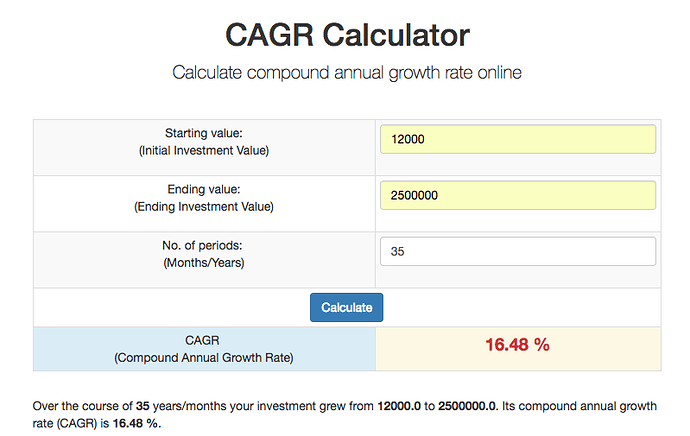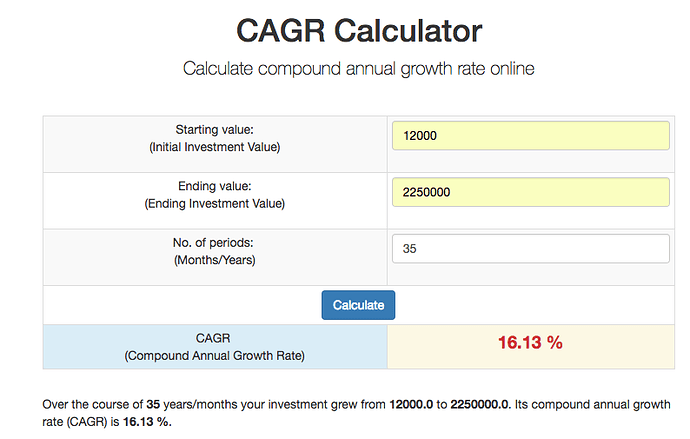Found this section from Poor Charlie’s Almanac very relevant to the effect of taxes on returns.
"Another very simple effect I very seldom see discussed either by investment managers or anybody else is the effect of taxes. If you’re going to buy something that compounds for thirty years at fifteen percent per annum and you pay one thirty-five percent tax at the very end, the way that works out is that after taxes, you keep 13.3 percent per annum.
In contrast, if you bought the same investment but had to pay taxes every year of thirty-five percent out of the fifteen percent that you earned, then your return would be fifteen percent minus thirty-five percent of fifteen percent-or only 9.75 percent per year compounded. So the difference there is over 3.5 percent. And what 3.5 percent does to the numbers over long holding periods like thirty years is truly eye-opening. If you sit on your ass for long, long stretches in great companies, you can get a huge edge from nothing but the way income taxes work.
Even with a ten percent per annum investment, paying a thirty-five percent tax at the end gives you 8.3 percent after taxes as an annual compounded result after thirty years. In contrast, if you pay the thirty-five percent each year instead of at the end, your annual result goes down to 6.5 percent. So you add nearly two percent of after-tax return per annum if you only achieve an average return by historical standards from common stock investments in companies with low dividend payout ratios.
But in terms of business mistakes that I’ve seen over a long lifetime, I would say
that trying to minimise taxes too much is one of the great standard causes of really dumb mistakes. I see terrible mistakes from people being overly motivated by tax considerations.
Warren and I personally don’t drill oil wells. We pay our taxes. And we’ve done
pretty well, so far."
–
Charlie Munger from ‘Poor Charlie’s Alamac’
Munger considers paying 35% tax without indexation on long-term returns to be not so bad. Over very long periods, paying that 10% LTCG will not have a significant impact on CAGR returns.
To add further to this, I performed a CAGR calculation of Rs.12,000 invested in Reliance Industries in 1982 turning to Rs.25,00,000 in 2017 which is a realistic scenario from Indian markets from a very-long term perspective of 35 years.
The CAGR returns without tax is 16.48% without taxes and assuming a LTCG without indexation of 10%, the returns drop to Rs.22,50,000 in which case, the CAGR returns are at 16.13%.
See these screenshots to see what I mean.


